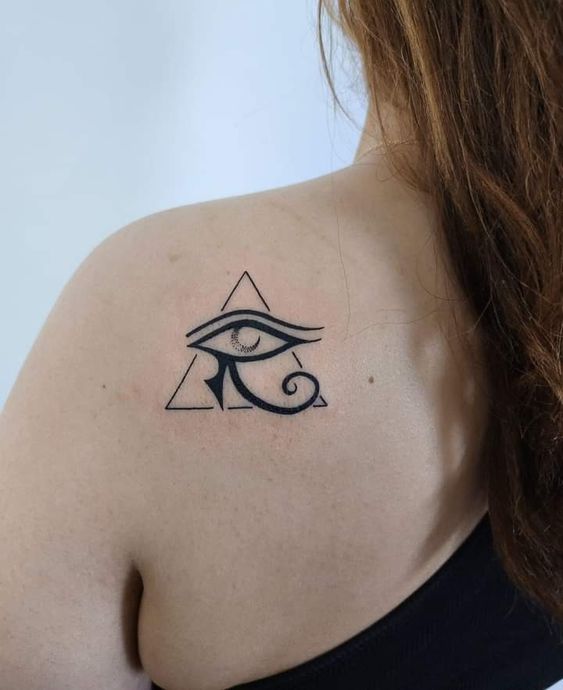
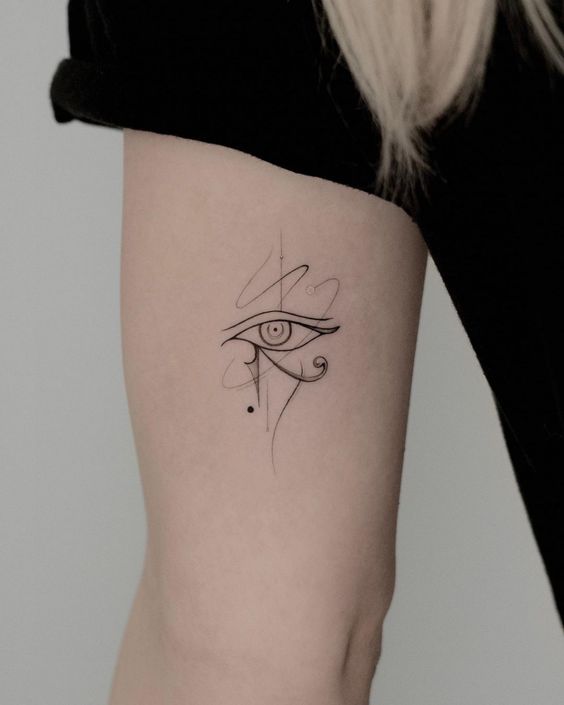
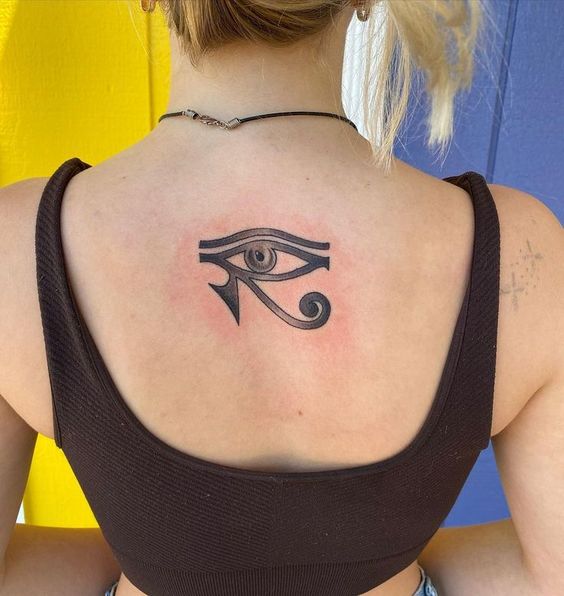

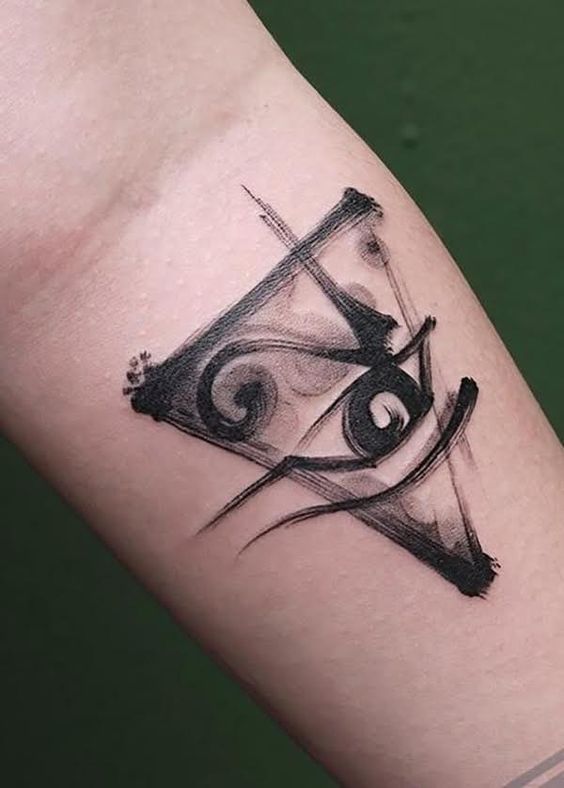
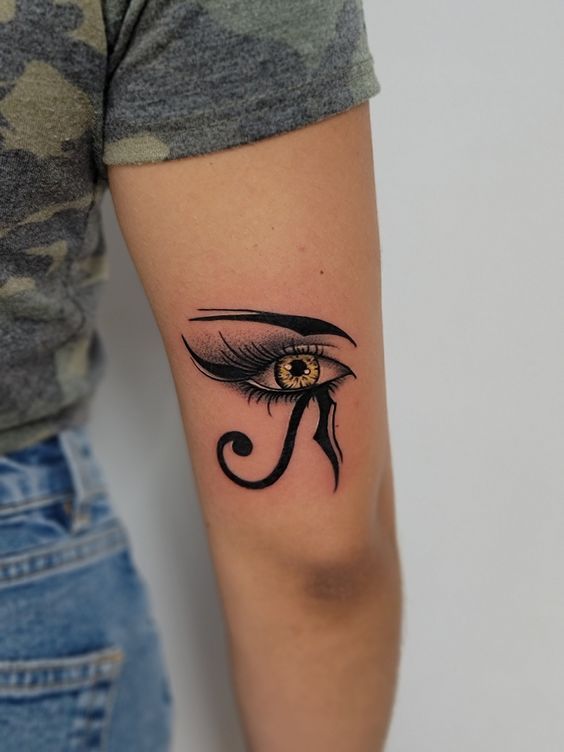
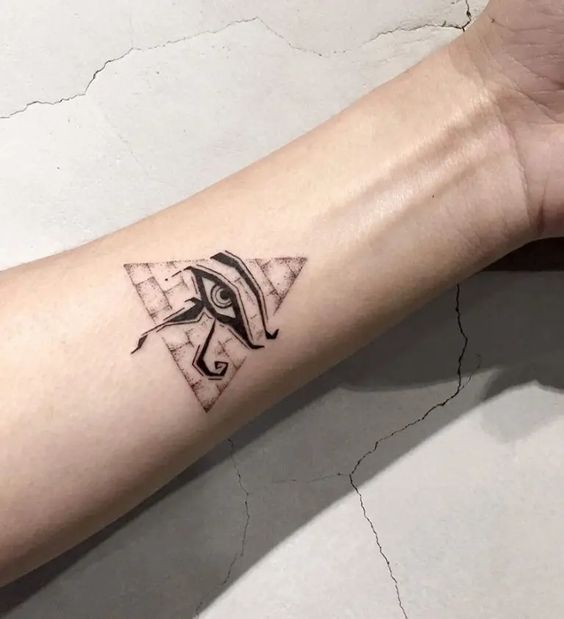
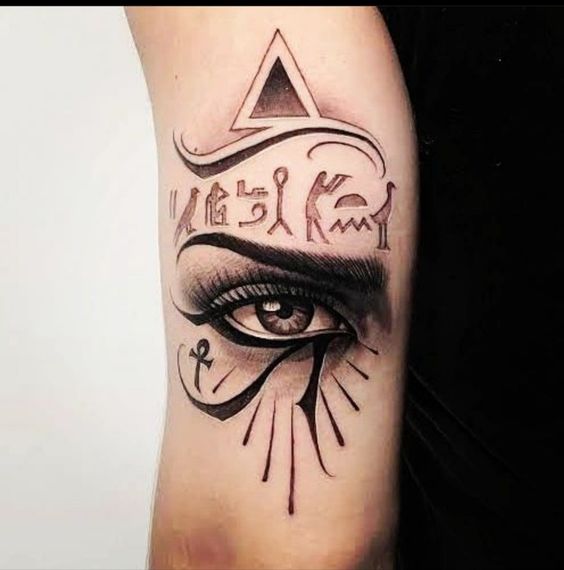
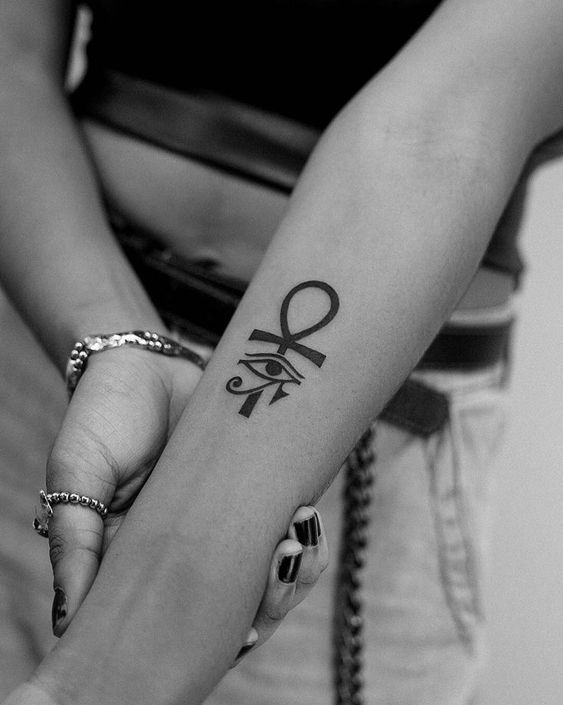
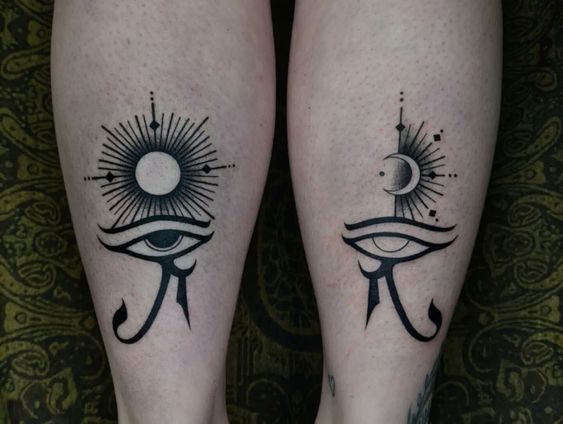
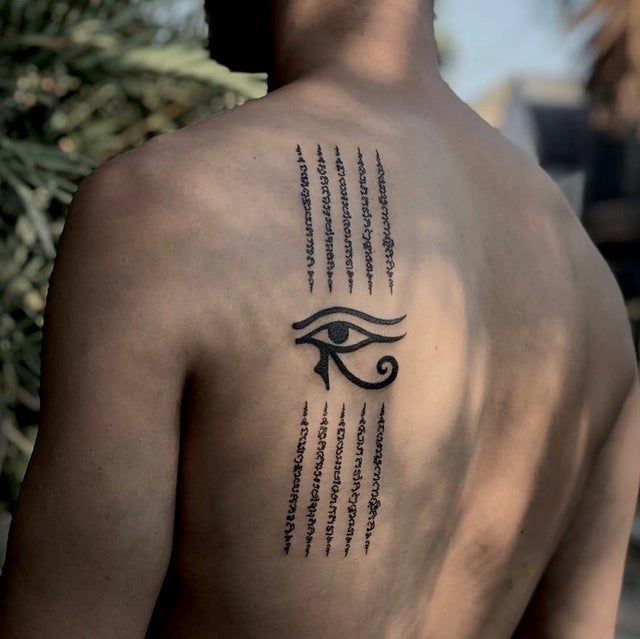

All image credit: Pinterest
Eye of Horus Tattoo: The Eye of Horus, also known as the Wadjet or the Eye of Ra, is an antique Egyptian symbol that has fascinated minds for millennia. Revered for its rich symbolism and spiritual importance, this iconic eye carries a central place in Egyptian mythology and has surpassed its origins to become a widely acknowledged symbol across cultures. In this article, we will talk about the history, symbolism, and continuing allure of the Eye of Horus.
Also See:
Origins of Eye of Horus
The Eye of Horus has its roots profoundly ingrained in ancient Egyptian mythology. It is named after Horus, the falcon-headed god of the sky and one of the most important deities in the Egyptian pantheon. Legend has it that Horus, the son of Osiris and Isis, opposed a fierce battle with his uncle Set, who had murdered Osiris. During the battle, Horus lost his left eye, which was later restored by the god Thoth.
Symbolism and Meaning Eye of Horus Tattoo
Protection and Healing
The Eye of Horus is usually considered a symbol of protection and good health. It is thought to have protective qualities, warding off evil forces and bringing blessings to the wearer. In ancient times, people would include the symbol in amulets, jewelry, and other artifacts as a talisman for safeguarding their well-being.
Divine Insight
Due to its connection with the god Horus, the eye is also seen as a symbol of religious insight and omniscience. It symbolizes the watchful and all-seeing gaze of the gods, qualified to perceive both the physical and spiritual realms.
Mathematical Significance
The Eye of Horus is intricately linked to Egyptian mathematics. The six parts of the eye—tears, eyebrow, pupil, white of the eye, bridge, and cheek—are considered to correspond to the six senses. Additionally, these elements convey fractions, with the sum of the parts equating to one whole, making the symbol a mathematical metaphor.
Depiction and Iconography
The Eye of Horus is usually described as a stylized human eye, embellished with markings that hold specific meanings
Tears: Represent fractions, each with a numerical value.
Pupil: Symbolizes the unit of measurement.
Eyebrow: Represents the fractional part 1/2.
Cheek: Represents the fractional part 1/8.
Bridge: Symbolizes the fractional part 1/4.
White of the Eye: Represents the fractional part 1/16.
This symbolic breakdown showcases the meticulous attention to detail in ancient Egyptian symbolism and mathematics.
Legacy and Modern Interpretations
The Eye of Horus has not faded into obscurity with time. Instead, it has taken and exceeded its cultural origins. Beyond its representation in Egyptian iconography, the symbol has found its way into modern art, fashion, and spirituality.
In modern times, the Eye of Horus is usually adopted for its aesthetic appeal and deep symbolism. Many people choose to include this ancient emblem in tattoos, jewelry, and artwork as a means of connecting with its historical roots and drawing upon its powerful meanings.
At The End
The Eye of Horus acts as proof of the continuing power of symbols. Its journey from the records of Egyptian mythology to the forefront of contemporary culture is an example of its timeless allure. As we gaze upon this ancient eye, we are reminded not only of the rich tapestry of Egyptian beliefs but also of the universal human fascination with the mystical and the exceeding—a passion that exceeds the boundaries of time and culture.








